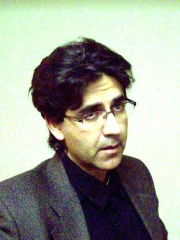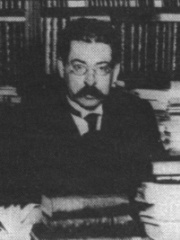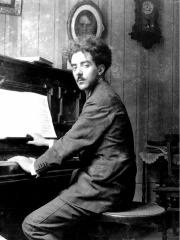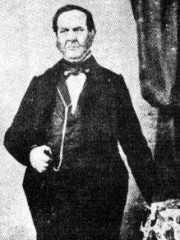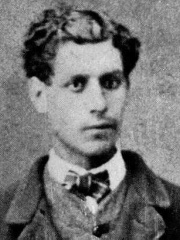

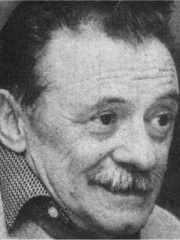
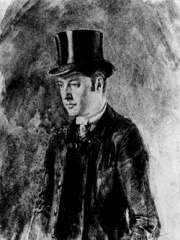
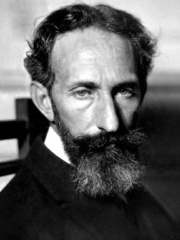
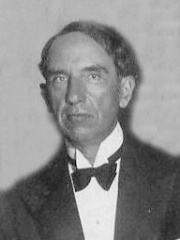
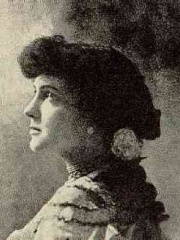
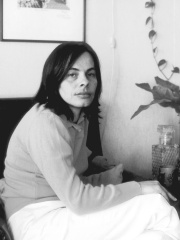
The Most Famous
WRITERS from Uruguay
Top 10
The following people are considered by Pantheon to be the top 10 most legendary Uruguayan Writers of all time. This list of famous Uruguayan Writers is sorted by HPI (Historical Popularity Index), a metric that aggregates information on a biography’s online popularity. Visit the rankings page to view the entire list of Uruguayan Writers.

1. Comte de Lautréamont (1846 - 1870)
With an HPI of 67.71, Comte de Lautréamont is the most famous Uruguayan Writer. His biography has been translated into 43 different languages on wikipedia.
Comte de Lautréamont (French: [lotʁeamɔ̃]) was the nom de plume of Isidore Lucien Ducasse (4 April 1846 – 24 November 1870), a French poet born in Uruguay. His only works, Les Chants de Maldoror and Poésies, had a major influence on modern arts and literature, particularly on the Surrealists and the Situationists. Ducasse died at the age of 24.

2. Eduardo Galeano (1940 - 2015)
With an HPI of 64.73, Eduardo Galeano is the 2nd most famous Uruguayan Writer. His biography has been translated into 55 different languages.
Eduardo Hughes Galeano (Spanish pronunciation: [eˈðwaɾðo ɣaleˈano]; 3 September 1940 – 13 April 2015) was a Uruguayan journalist, writer and novelist considered, among other things, "a literary giant of the Latin American left" and "global soccer's pre-eminent man of letters".Galeano's best-known works are Las venas abiertas de América Latina (Open Veins of Latin America, 1971) and Memoria del fuego (Memory of Fire Trilogy, 1982–6). "I'm a writer," the author once said of himself, "obsessed with remembering, with remembering the past of America and above all that of Latin America, intimate land condemned to amnesia."Author Isabel Allende, who said her copy of Galeano's book was one of the few items with which she fled Chile in 1973 after the military coup of Augusto Pinochet, called Open Veins of Latin America "a mixture of meticulous detail, political conviction, poetic flair, and good storytelling."

3. Mario Benedetti (1920 - 2009)
With an HPI of 59.18, Mario Benedetti is the 3rd most famous Uruguayan Writer. His biography has been translated into 40 different languages.
Mario Benedetti Farrugia (Spanish pronunciation: [ˈmaɾjo βeneˈðeti] ; 14 September 1920 – 17 May 2009), was a Uruguayan journalist, novelist, and poet and an integral member of the Generación del 45. Despite publishing more than 80 books and being published in twenty languages, he was not well known in the English-speaking world. In the Spanish-speaking world he is considered one of Latin America's most important writers of the latter half of the 20th century.

4. Jules Laforgue (1860 - 1887)
With an HPI of 58.79, Jules Laforgue is the 4th most famous Uruguayan Writer. His biography has been translated into 29 different languages.
Jules Laforgue (French: [ʒyl lafɔʁɡ]; 16 August 1860 – 20 August 1887) was a Franco-Uruguayan poet, often referred to as a Symbolist poet. Critics and commentators have also pointed to Impressionism as a direct influence and his poetry has been called "part-symbolist, part-impressionist". Laforgue was a model for Pierre-Auguste Renoir, including for Renoir's 1881 painting Luncheon of the Boating Party.
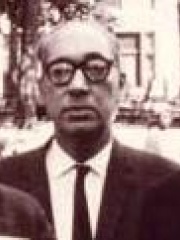
5. Juan Carlos Onetti (1909 - 1994)
With an HPI of 56.91, Juan Carlos Onetti is the 5th most famous Uruguayan Writer. His biography has been translated into 39 different languages.
Juan Carlos Onetti Borges (July 1, 1909 – May 30, 1994) was a Uruguayan novelist and author of short stories.

6. Horacio Quiroga (1878 - 1937)
With an HPI of 56.19, Horacio Quiroga is the 6th most famous Uruguayan Writer. His biography has been translated into 30 different languages.
Horacio Silvestre Quiroga Forteza (31 December 1878 – 19 February 1937) was a Uruguayan playwright, poet, and short story writer. He wrote stories which, in their jungle settings, used the supernatural and the bizarre to show the struggle of man and animal to survive. He also excelled in portraying mental illness and hallucinatory states, a skill he gleaned from Edgar Allan Poe, according to some critics. His influence can be seen in the Latin American magical realism of Gabriel García Márquez and the postmodern surrealism of Julio Cortázar.

7. Jules Supervielle (1884 - 1960)
With an HPI of 53.99, Jules Supervielle is the 7th most famous Uruguayan Writer. His biography has been translated into 25 different languages.
Jules Supervielle (16 January 1884 – 17 May 1960) was a Franco-Uruguayan poet and writer born in Montevideo. He was nominated for the Nobel Prize in Literature three times.He opposed the surrealism movement in poetry and rejected automatic writing, although he did adopt other techniques of modern poetry. In so doing he anticipated the literary movements of the late 1940s, including the work of such authors as René Char, Henri Michaux, Saint-John Perse or Francis Ponge. Amongst his admirers are René-Guy Cadou, Alain Bosquet, Lionel Ray, Claude Roy, Philippe Jaccottet and Jacques Réda.

8. Delmira Agustini (1886 - 1914)
With an HPI of 53.39, Delmira Agustini is the 8th most famous Uruguayan Writer. Her biography has been translated into 34 different languages.
Delmira Agustini (October 24, 1886 – July 6, 1914) was an Uruguayan poet of the early 20th century.

9. Cristina Peri Rossi (b. 1941)
With an HPI of 51.94, Cristina Peri Rossi is the 9th most famous Uruguayan Writer. Her biography has been translated into 24 different languages.
Cristina Peri Rossi (born 12 November 1941) is a Uruguayan novelist, poet, translator, and author of short stories. Considered a leading light of the post-1960s period of prominence of the Latin-American novel, she has written more than 37 works. She has been a pioneer and one of the female authors associated to the Latin American Boom. Peri Rossi has lived in Barcelona since 1972, after a civic-military dictatorship was established in Uruguay and censored her works. She has translated into Spanish authors such as Clarice Lispector and Monique Wittig. She has worked for several newspapers and media agencies such as Diario 16, El Periódico and Agencia EFE. Peri Rossi won the Miguel de Cervantes Prize in 2021, the most prestigious literary award in the Spanish-speaking world.
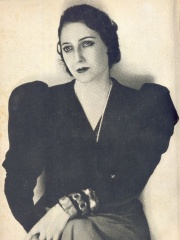
10. Juana de Ibarbourou (1892 - 1979)
With an HPI of 51.77, Juana de Ibarbourou is the 10th most famous Uruguayan Writer. Her biography has been translated into 28 different languages.
Juana Fernández Morales de Ibarbourou, also known as Juana de América, (March 8, 1892 – July 15, 1979) was a Uruguayan poet and one of the most popular writers of Spanish America. Her poetry, the earliest of which is often highly erotic, is notable for her identification of her feelings with nature around her. She was nominated for the Nobel Prize in Literature four times.
People
Pantheon has 22 people classified as Uruguayan writers born between 1790 and 1969. Of these 22, 5 (22.73%) of them are still alive today. The most famous living Uruguayan writers include Cristina Peri Rossi, Ida Vitale, and Carmen Posadas. The most famous deceased Uruguayan writers include Comte de Lautréamont, Eduardo Galeano, and Mario Benedetti. As of April 2024, 2 new Uruguayan writers have been added to Pantheon including Francisco Acuña de Figueroa, and Carmen Posadas.
Living Uruguayan Writers
Go to all RankingsCristina Peri Rossi
1941 - Present
HPI: 51.94
Ida Vitale
1923 - Present
HPI: 51.26
Carmen Posadas
1953 - Present
HPI: 40.89
Claudia Amengual
1969 - Present
HPI: 36.02
Jorge Majfud
1969 - Present
HPI: 34.49
Deceased Uruguayan Writers
Go to all RankingsComte de Lautréamont
1846 - 1870
HPI: 67.71
Eduardo Galeano
1940 - 2015
HPI: 64.73
Mario Benedetti
1920 - 2009
HPI: 59.18
Jules Laforgue
1860 - 1887
HPI: 58.79
Juan Carlos Onetti
1909 - 1994
HPI: 56.91
Horacio Quiroga
1878 - 1937
HPI: 56.19
Jules Supervielle
1884 - 1960
HPI: 53.99
Delmira Agustini
1886 - 1914
HPI: 53.39
Juana de Ibarbourou
1892 - 1979
HPI: 51.77
José Enrique Rodó
1871 - 1917
HPI: 49.96
Felisberto Hernández
1902 - 1964
HPI: 48.72
Alfredo Zitarrosa
1936 - 1989
HPI: 48.42
Newly Added Uruguayan Writers (2024)
Go to all RankingsOverlapping Lives
Which Writers were alive at the same time? This visualization shows the lifespans of the 17 most globally memorable Writers since 1700.




